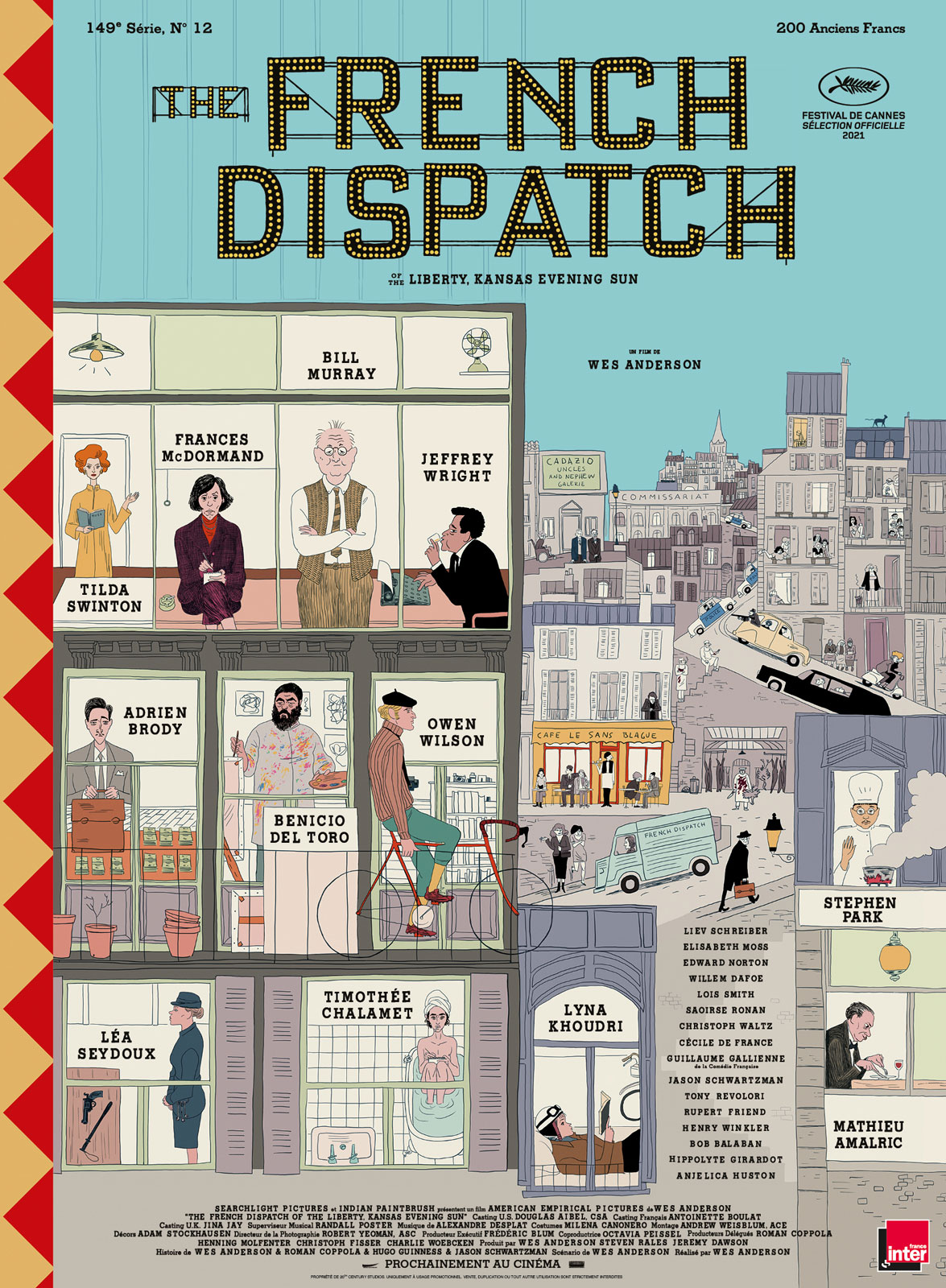The French Dispatch is the 21st movie of the American filmmaker Wes Anderson. This comedy-drama was selected in the Official Competition at Cannes Film Festival this year and debuted in theaters on October 27, 2021.
Critics designate this work as a real declaration of love to France and journalists in general. Composed of three stories, precisely three press articles, the guiding thread centers around an obsessive editor, Arthur Howitzer Jr, and his team of American expatriate writers. At his death, these journalists set out to report three stories for the final issue of the newspaper.
Aesthetics and unique style, signed Anderson
With his new creation, the film director remains true to his trademark. Formal aesthetics and meticulous production are the film director’s watchwords. Each shot is a work of art, with many subtleties and details. Thus, all the shots and transitions are thoughtful and well-designed, ranging from sideways dollies between the cut pieces to transitions in form of comics. Nevertheless, the settings stay whimsical, with references to animated films. Finally, the originality of Wes Anderson’s style is based on a mixture of visual styles. The film oscillates between bright colors and sequences in black and white.
A cast to make a red-carpet swoon
To bring these quirky characters to life, he relied on a quality cast. For instance, we can see Billy Murray, Frances McDormand, Timothée Chalamet, Léa Seydoux, Adrien Brody, Benicio Del Toro or even Tilda Swinton.
A hymn to French culture
The French Dispatch is a mosaic of references to France, from its title to its setting.
Indeed, the movie takes place in a fictional French town called Ennui-sur-Blasé. Moreover, these articles address three major themes of French identity, while relying on many French clichés: the arts (avant-garde), social struggles (parody of May 68), and gastronomy. The film, although American, is also a polyglot cinematographic work, consisting of many French-speaking actors.
Inspirations between facts and fiction
In order to make the apology of a certain press dedicated to the long reports, richly documented and illustrated, Wes Anderson was inspired by the real editor of the famous American magazine New Yorker, Harold Ross, along with his staff. Additionally, some of the characters are also inspired by real people like the characters of Luncinda Krementz played by Frances Mc Dormand, and Julian Cadazio embodied by Adrien Brody. The director has also drawn his inspiration from the aesthetics of French cinema. Among his sources of inspiration, we can mention Vivre sa vie (1962) by Jean-Luc Godard, Quai des Orfèvres (1947) signed by George Clouzot, or also les 400 coups (1959) directed by François Truffaut.
When the question of parallels between reality and fiction arises, it seems to us that the film revolves mainly around the character of the editor and his work: “It is more a portrait of this man, a journalist who fights to write what he wants to write” (Cosmopolitan).
We can make a link with journalism nowadays. Indeed, in the digital era it is obvious that there is a significant distrust of the media; this feature film restores justice and grandeur to the profession.
Manon Houset
Sources:
https://www.allocine.fr/film/fichefilm_gen_cfilm=269684.html
https://www.lefigaro.fr/festival-de-cannes/the-french-dispatch-l-imperturbable-wes-anderson-20210712
https://screenrant.com/tag/the-french-dispatch/
Illustration: ©The French Dispatch – Wes Anderson – Searchlight Pictures – 2021

